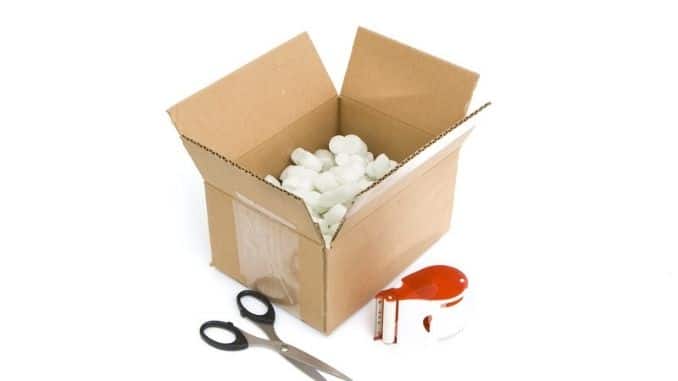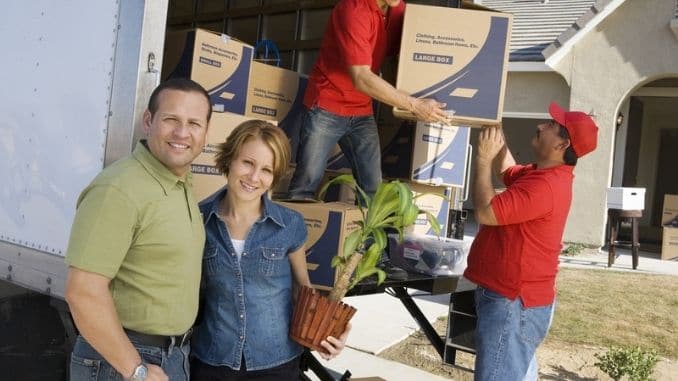
These days, moving is a part of life for most people. According to the American Moving and Storage Association (AMSA), in the United States alone, just over 11 percent of the population moves annually. In Canada, the number is a bit higher, rolling in at 14 percent of Canadians that tend to move within the country each year. If you’re moving this year, you are in the company of literally millions of others around the world who will be packing up their homes and relocating as well. And statistically, this won’t be the only time you move. According to United States Census data, on average, an American will move around 11 times in his or her lifetime.
The odds are good that you could be moving sometime in the next few years. And if you do, you may need some tips on how to do it efficiently. Fortunately, we’ve spoken to some industry experts and created an insider’s guide to packing and moving like the pros do it.
It’s not too early to start planning your move. The very best, low-stress and easy moves are the ones that are planned well in advance. If it’s possible, start your planning a couple of months before your actual move day. You’ll have the time and mental clarity to find the exact supplies you need, shop around for affordable professional services, and space out the hard work of packing and prepping into smaller, more manageable tasks.
It’s not too late to move like a pro if you’ve only got five days to knock it out. Life happens. Conditions aren’t always ideal and sometimes you might find yourself with just a handful of days to pack up and move from your 2,500 square foot dream home to a studio apartment three states away. The good news is, you can follow these pro tips to pull off a short-term move without losing your cool as well.
First spread the word. Tell your friends, neighbors, and family members that you’re moving, and give them your approximate move date. People who care for you may offer their help, a stack of sturdy boxes, or childcare for moving day.
Gather moving supplies. Minimally, you will need boxes of various sizes, packing tape, packing paper or bubble wrap, and a fat black marker. If you’re moving furniture, you’ll likely also need moving blankets. They can be purchased or rented from large moving and shipping companies. For mattresses, consider purchasing mattress protection bags. Mattress bags range in price and quality. Some are simply very large, thick plastic bags with sticker seals to enclose your mattress; others are made from vinyl or heavy cloth with zipper closures. Another very helpful item is a large roll of stretch wrap designed for moving. It comes in 1,000 ft. rolls and can be used to wrap around furniture, artwork, and any items with small parts to prevent them from moving around during the ride. Finally, bungee cords with hooks on the ends are extremely helpful when you’re stacking boxes and belongings inside of a moving truck. You can typically purchase them by the dozen at hardware and multipurpose stores.
Divide your home into zones or categories for packing. Most of us have homes with somewhere between five and ten specific zones. When you divide your house into packing zones, it’s easy to schedule and prioritize where to start and in which order to proceed. Here is a list of common categories or zones you might have in your home:
- Kitchen and dining room
- Adult bedrooms
- Children’s bedrooms and playroom
- Living room and family room
- Home office
- Guest rooms
- Laundry area and bathroom
- Garage, storage area, porch and yard
Create a packing schedule. Take a good look at your categories and determine which zones your family uses the least often. Those will be the areas to tackle first. If your family will not be having any guests over, perhaps your first zone should be the guest room(s). If you know you won’t be bringing work home until after the move, your home office will be at the top of the list. Order your list so that your least-used rooms are at the top and the rooms that you use every day are last.
What can you live without? Once you’ve divided your hose into packing zones and have determined your schedule, it’s time to go to your first zone and get rid of items that you no longer need or want. Be quick and decisive about it. If you haven’t used something in a year and you don’t love it, it’s probably time to get rid of it. Reserve a large box for items that you will donate or discard.
Begin packing up your zone. When you’re ready to pack your belongings, gather several boxes, your packing tape, and other supplies right in the zone where you’ll be working. Pack like items together. If you’re working in the home office zone, create a box for all of your basic office supplies like the tape dispenser, stapler, hole puncher, pen cup, etc. Another box should hold the contents of your desk drawers, while an additional box contains your extension cords, chargers, headphones, and cord adaptors. Tape the box closed and immediately write the contents on the outside of the box in bold letters. Be as specific as necessary. A box labeled “Office” is not nearly as helpful as one labeled “Office – stapler, desktop supplies, etc.” When your items arrive at your new home, it’ll be helpful to know which box holds the printer and where to find your paperclips.
Pack efficiently. Some things are pretty easy to toss into a box rather thoughtlessly. Throw pillows, winter coats, stuffed animals and tube socks come to mind here. But other items will take a little forethought. Here are some helpful tips for packing common awkward, bulky or fragile items you may have:
- Artwork – Cut two pieces of cardboard just about an inch larger than the artwork. Place one over the front and one over the back of the artwork. Then secure the cardboard in place by wrapping it all around with stretch wrap or plastic wrap. Alternatively, you can buy boxes specifically made for large artwork.
- Glassware and dishes – Use smaller, sturdy boxes to pack fragile dishes and glass kitchenware. Wrap them with newspaper, bubble wrap, or dish towels and rags. Be sure to write “fragile” on all sides of the box in bold letters.
- Countertop appliances – Your electric pressure cooker, industrial blender, and waffle iron are best protected when they’re packed in their original boxes. However, the next best method is to pack each countertop appliance in a box by itself, surrounded by lots of padding. I’ve found the most effective padding for this job is kitchen towels, bath towels, and cleaning rags.
- Clothes on hangers – Rather than removing all your clothes from hangers, consider buying a few wardrobe boxes. These boxes are long and made with a hanger bar inside. Also, use any garment bags or suit bags that you have to pack your hanging clothes.
- Other clothing – If you have spare suitcases, pack all of the clothes you can fit inside them before you put the rest inboxes.
- Jewelry – Necklaces are easily tangled and earrings can be lost from their beloved partners during a move. Use cardboard, tape, zipper-seal bags, and bubble wrap to keep jewelry protected and exactly where you want it. Then pack the items into smaller boxes without leaving any room for them to slide around.
- Electronics – Tablets, laptops or desktop computers, DVD players, and other electronics are both fragile and of high value. These items are best packed in their original boxes when possible. Alternatively, use a box that is sturdy, secure, and not much bigger than the electronic item you’re packing. Be sure it’s powered down and wrapped in an abundance of bubble wrap. Specifically, label the box with the name of the item inside and the word “fragile” on all sides.
- Books – When you’re packing books, choose small sturdy boxes rather than large ones to ensure they aren’t extremely heavy. Don’t allow any room for the books to move around inside the box. If there is headroom, be sure to fill it with packing paper, bubble wrap, or empty shopping bags to make sure your books remain stacked close together throughout the movie.
- Large furniture – Most furniture is easiest to move when it has been disassembled. Remove the legs from dining tables and the feet from couches and chairs. Take wheels off of rolling chairs and remove the shelves from bookcases. Use small sandwich bags to hold screws, bolts, and hardware from the furniture pieces. Then label the bags and tape or secure them to the furniture. Wrap your furniture in moving blankets or actual sheets, large towels, or blankets. Some furniture can even be wrapped with stretch wrap or bubble wrap.
Work down the list. In the days and weeks leading up to your move, work through one packing zone at a time, and don’t move on to another area until you’re finished with the current zone. If you stick to your zone schedule, you’ll find that it’s efficient and easy to manage. Depending on the size of the particular zone, you may need a few hours or up to several days to complete your decluttering and packing. My family has a schoolroom where we homeschool our children. As I started prepping for our last move, I knew that the homeschool room would take a few days to break down and pack, so I allotted plenty of time for sorting, setting aside donations, and packing up that area.
Some zones will need to be picked up during the final week before your moving day. However, you can begin the decluttering and donation phase in those rooms anytime. You can also pack up all but the necessary items in the final zones and organize the rest into one corner of the room.
Transport your belongings like a pro. There are a few different ways to move your household goods from one place to another. You can hire a moving company to carry all of your furniture and boxes to a truck and drive them to your new home. You can rent a truck, pack it up and drive it yourself. There are companies that will drop off shipping pods at your home, allow you to fill them, then pick them up and deliver them to your destination for you to unload. There are also common carriers that will allow you to rent space on their trucks, measured by the foot.
However you decide to transport your belongings, you’ll want to make doubly sure that they are secure throughout the trip. Moving straps and furniture dollies are your friends! Use them to safely get your valued furniture and boxes from your house to the moving truck. These items are available to rent from shipping and moving companies and some hardware stores. Never try to move heavy furniture on your own. Either hire a couple of movers for an hour or two to assist you or ask a friend to come and help.
When packing the truck, use bungee cords and thoughtful stacking methods to ensure that things will stay as still as possible while they are on the road. Take your time and double-check to make sure heavy items are well secured at the bottom of the truck and lighter items will not be crushed in transit. When you’ve taken all the time to prepare these items, it is imperative that they are packed into the truck with care so that they don’t arrive destroyed or damaged.
A few other considerations: Buy convenience foods for moving day and the day before. Frozen pizzas, ready-made sandwiches, bagged snacks, whole fruit, and bottled water are all good options to have on hand. When your dishes are packed, the silverware is on the truck and your refrigerator has been cleared and cleaned, you’ll still need to eat something. Be sure that you’ve got some options that don’t require any kitchen prep or utensils.
Moving with pets? Be sure to check with your airline several weeks before you fly so that you can get the necessary vaccines or check-up records from your veterinarian. You may also need a tranquilizer when transporting pets that are prone to anxiety or aggression.
Moving can be particularly boring and sometimes difficult for children. If you’ve got little ones to consider, buy a couple of travel toys or games and keep them hidden until moving day. When you need to keep the kids occupied or out of the loading path, bring out the new toys. It’ll give them something to do and let them know that you care about them and their happiness during a busy and challenging time.
Often there are items that won’t fit on the truck or that you’ve decided you can’t take at the last minute. It’s a good idea to have the contact information for a local junk hauler just in case you need it. A landlord or homeowners association will likely send you a junk removal bill if there’s any significant debris left on the curbside. Have any such items picked up for a small fee on moving day instead?
Finally, keep a box cutter in your travel bag or on your person so that you can easily unpack your boxes when you arrive at the new home.
Packing and moving isn’t generally anyone’s all-time, favorite activity. Nonetheless, it doesn’t have to be among the worst, most stressful, and frustrating events you can imagine. The next time your life leads you to a new locale, start preparations as early as possible and follow this guide to pack and move like a seasoned moving professional.
Stress is dangerous! Learn how to decrease your stress level today.








